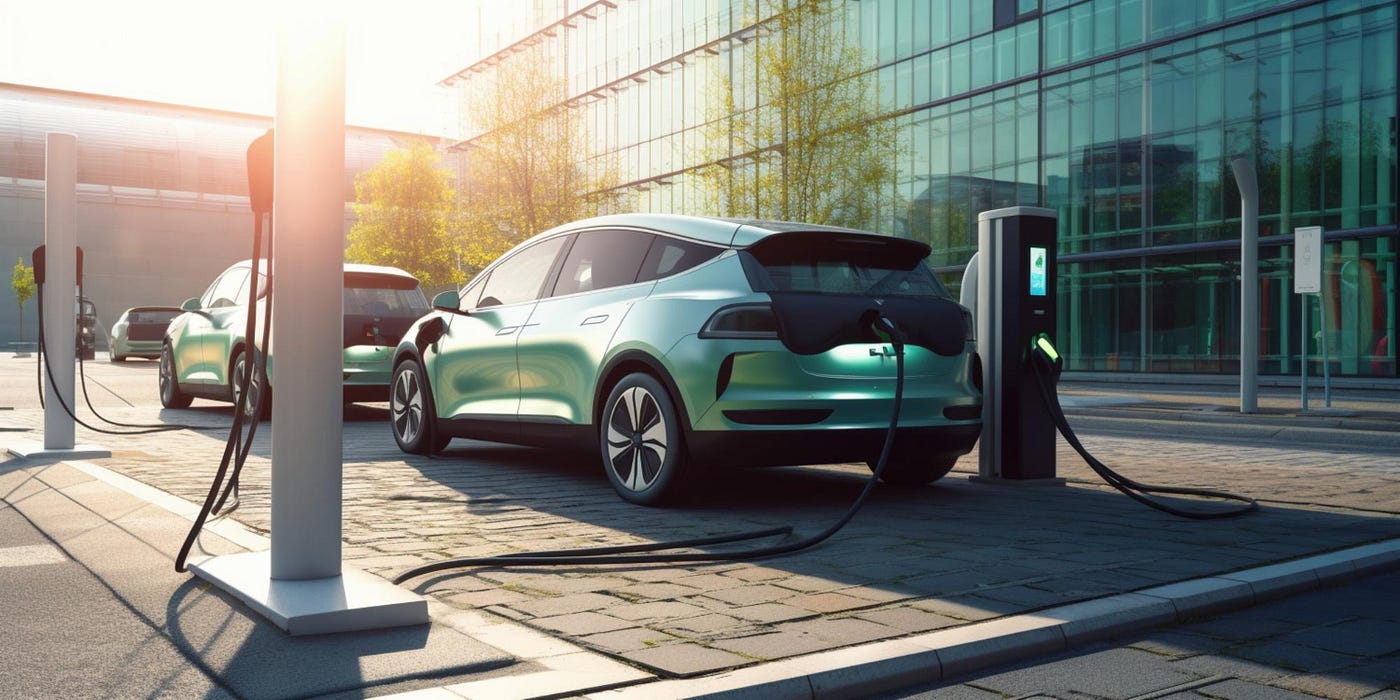The automotive industry is undergoing a seismic shift as electric vehicles (EVs) take center stage. Once considered a niche market, EVs are now mainstream, with major automakers investing heavily in electric technology. By 2025, electric vehicles are predicted to dominate global roads, reducing reliance on fossil fuels and significantly cutting carbon emissions. This article delves into the factors driving the EV revolution, its impact on the environment and economy, and the challenges and opportunities that lie ahead.
1. The Evolution of Electric Vehicles
Electric vehicles are not a new concept. The first EVs emerged in the 19th century, but their popularity waned as internal combustion engines became more efficient and gasoline cheaper. However, the 21st century has witnessed a revival in electric mobility, driven by advances in battery technology, environmental awareness, and supportive government policies.
Today, EVs are available in various forms, from fully electric (battery electric vehicles or BEVs) to hybrid models that combine electric motors with traditional engines. Brands like Tesla, Nissan, and Chevrolet have led the charge, inspiring other automakers to follow suit.
2. Environmental Benefits of EVs
One of the most compelling reasons for the rise of electric vehicles is their potential to combat climate change. Traditional gasoline and diesel vehicles emit significant amounts of greenhouse gases (GHGs), contributing to global warming. EVs, on the other hand, produce zero tailpipe emissions.
Moreover, as renewable energy sources like solar and wind power become more prevalent, the electricity used to charge EVs is becoming cleaner. By 2025, the integration of renewable energy with EV charging infrastructure is expected to further enhance their environmental benefits.
3. Economic Advantages of Electric Vehicles
Beyond environmental benefits, EVs also offer substantial economic advantages:
- Lower Operating Costs: EVs are cheaper to maintain than traditional vehicles. They have fewer moving parts, which means fewer repairs and replacements.
- Reduced Fuel Expenses: Electricity is generally cheaper than gasoline, and as charging infrastructure expands, EV owners will enjoy even greater convenience and savings.
- Government Incentives: Many countries offer tax breaks, rebates, and other incentives to encourage EV adoption. These benefits reduce the upfront cost of purchasing an EV, making them more accessible.
4. Key Industry Players and Innovations
Several companies are leading the EV revolution, each contributing unique innovations:
- Tesla: Known for its cutting-edge technology and sleek designs, Tesla continues to dominate the EV market. Its Model 3 and Model Y have set benchmarks for affordability and performance.
- Rivian and Lucid Motors: New players like Rivian and Lucid Motors are making waves with their luxury EVs and rugged electric trucks.
- Legacy Automakers: Traditional manufacturers like Ford, General Motors, and Volkswagen are pivoting to electrification, unveiling ambitious plans to phase out internal combustion engines.
5. Advances in Battery Technology
Battery technology is the backbone of the EV revolution. Lithium-ion batteries have become the industry standard, offering higher energy density and longer ranges. In 2025, solid-state batteries are expected to hit the market, promising even greater efficiency, faster charging times, and improved safety.
The cost of batteries, once a major barrier to EV adoption, has dropped significantly in recent years. This trend will continue, making EVs more affordable for the average consumer.
6. Expansion of Charging Infrastructure
A robust charging network is essential for widespread EV adoption. Governments and private companies are investing billions in expanding charging stations, particularly in urban areas and along highways. By 2025, ultra-fast chargers capable of replenishing an EV’s battery in minutes will become commonplace.
Wireless charging, where EVs can charge without being plugged in, is another exciting development. This technology is already being tested and could revolutionize the way we think about recharging vehicles.
7. Challenges Facing the EV Industry
While the future of electric vehicles looks bright, several challenges remain:
- Range Anxiety: Despite improvements in battery range, some consumers still worry about running out of power on long trips.
- Upfront Costs: While operating costs are lower, the initial price of EVs can still be prohibitive for some buyers.
- Infrastructure Gaps: Rural areas and developing countries often lack adequate charging infrastructure. Addressing this imbalance is crucial for global EV adoption.
- Raw Material Sourcing: The production of EV batteries relies on critical minerals like lithium, cobalt, and nickel. Ensuring sustainable and ethical sourcing is a pressing issue.
8. Government Policies and Global Commitments
Governments worldwide are playing a pivotal role in accelerating EV adoption. Many countries have set ambitious targets to phase out internal combustion engines. For instance:
- European Union: Plans to ban the sale of new gasoline and diesel cars by 2035.
- China: The world’s largest EV market aims for 40% of all car sales to be electric by 2030.
- United States: Several states, including California, have set aggressive zero-emission vehicle goals.
These policies, coupled with substantial investments in research and development, are creating a supportive ecosystem for the EV industry.
9. The Future of Electric Vehicles
The future of transportation is undeniably electric. By 2025, EVs will account for a significant share of new vehicle sales, and their presence will be felt across all sectors, from personal cars to public transit and freight. Autonomous electric vehicles, combining electrification with artificial intelligence, will further revolutionize mobility, making it safer, cleaner, and more efficient.
Additionally, innovations in vehicle-to-grid (V2G) technology will enable EVs to serve as mobile energy storage units, supporting grid stability during peak demand.
Conclusion
The rise of electric vehicles marks a turning point in the history of transportation. As we move closer to 2025, the shift to electric mobility is not just an environmental necessity but also an economic opportunity. With advancements in technology, supportive policies, and increasing consumer awareness, EVs are set to redefine how we move, making the world a cleaner and greener place.
The journey ahead is filled with challenges, but the potential rewards are immense. The electric vehicle revolution is not just about changing how we drive—it’s about shaping a sustainable future for generations to come.
